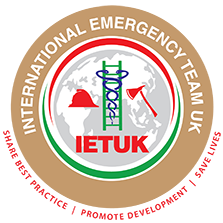Strategic Review of Firefighting Water Supplies and Equipment
Project Status - Delivered
Unlike developed cities within the UK, Lahore does not have a water main supply network that is available to the emergency services at times of emergency. When IETUK were made aware of this issue, we knew we had to help to find a solution that would fit local firefighting demands. The team set about undertaking a gap analysis of the situation and quickly determined that the problem was two fold:
 At the time the current Fire Appliance design in the Punjab carried a limited quantity of water for firefighting. This restricted quantity of water combined with a fire pump only capable of delivering water at low pressure / large volume meant that they had limited extinguishing capability and working duration.
At the time the current Fire Appliance design in the Punjab carried a limited quantity of water for firefighting. This restricted quantity of water combined with a fire pump only capable of delivering water at low pressure / large volume meant that they had limited extinguishing capability and working duration.
The traditional set-up was typically only using hose lines with low-pressure jets, and sprays to extinguish fires.
From a tactical perspective Incident Commanders were limited by these current restrictions. There was no ability to adopt modern firefighting techniques via high pressure / low volume equipment, as is standard practice in the UK and other developed countries.
In resolving this issue the IETUK team entered into joint discussion with the local fire appliance manufacturer in Lahore and the Punjab Emergency Service.
The end result has seen the development of a dual stage firefighting pump that is a game changer for the emergency service in the Pakistan.
New Fire Appliances are subsequently being fitted with this pump as standard and the service is currently retro fitting the new pump to the existing fleet.
The additional issue identified by the gap analysis was capacity and the ability to maintain adequate water supplies to deal with an incident.
Typically a standard fire appliance in the Punjab carries around 400 Gallon (1818 Litre) of water. Utilising their current equipment provision and firefighting tactics this may last as little as 6 minutes. In resolution of this issue it was agreed that Fire Appliance Water Tankers would be secured and mobilised to incidents in support of the initial firefighting appliance. Given the large capacity of a Water Tanker this gave a significant increase in firefighting water capacity.
 In addition to the mobilising of Water Tankers the team also worked with Punjab Emergency Service to determine strategic locations for the construction of above ground water storage tanks. These are utilised to quickly replenish Water Tankers, tactically providing a shuttle service to maintain firefighting water supplies at the incident ground.
In addition to the mobilising of Water Tankers the team also worked with Punjab Emergency Service to determine strategic locations for the construction of above ground water storage tanks. These are utilised to quickly replenish Water Tankers, tactically providing a shuttle service to maintain firefighting water supplies at the incident ground.
This project has realised significant improvements to the Punjab Emergency Service, not least that they can undertake firefighting operations more economically with increased capability, capacity and resilience.
Moving forward from this project, the IETUK team is now undertaking to advance the skills, knowledge and understanding of the emergency service in respect of modern firefighting techniques such as Compartment Fire Behaviour Training.

